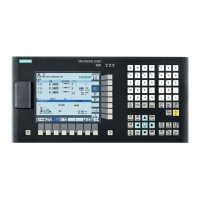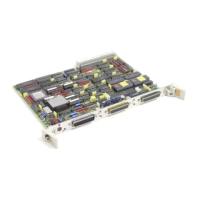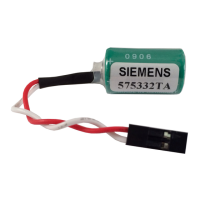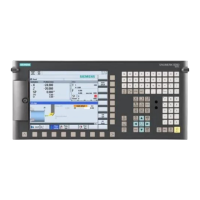Programming
10.9 Arithmetic parameters, LUD and PLC variables
Cylindrical grinding
304 Programming and Operating Manual, 07/2009, 6FC5398-4CP10-2BA0
10.9 Arithmetic parameters, LUD and PLC variables
10.9.1 Arithmetic parameter R
Functionality
The arithmetic parameters are used if an NC program is not only to be valid for values
assigned once, or if you must calculate values. The required values can be set or calculated
by the control system during program execution.
Another possibility consists of setting the arithmetic parameter values by operator inputs. If
values have been assigned to the arithmetic parameters, they can be assigned to other
variable-setting NC addresses in the program.
Programming
R0=... to R299=... ;Assign values to the arithmetic parameters
R[R0]=... ;Indirect programming: Assign a value to the arithmetic parameter R,
whose number can be found, e.g. in R0
X=R0 ;Assign arithmetic parameters to the NC addresses, e.g. for the X axis
Value assignments
You can assign values in the following range to the R parameters:
±(0.000 0001 ... 9999 9999)
(8 decimal places, arithmetic sign, and decimal point)
The decimal point can be omitted for integer values. A plus sign can always be omitted.
Example:
R0=3.5678 R1=-37.3 R2=2 R3=-7 R4=-45678.123
Use the exponential notation to assign an extended range of numbers:
± (10
-300
... 10
+300
)
The value of the exponent is written after the EX characters; maximum total number of
characters: 10 (including leading signs and decimal point)
Range of values for EX: -300 to +300
Example:
R0=-0.1EX-5 ;Meaning: R0 = -0.000 001
R1=1.874EX8 ;Meaning: R1 = 187 400 000
